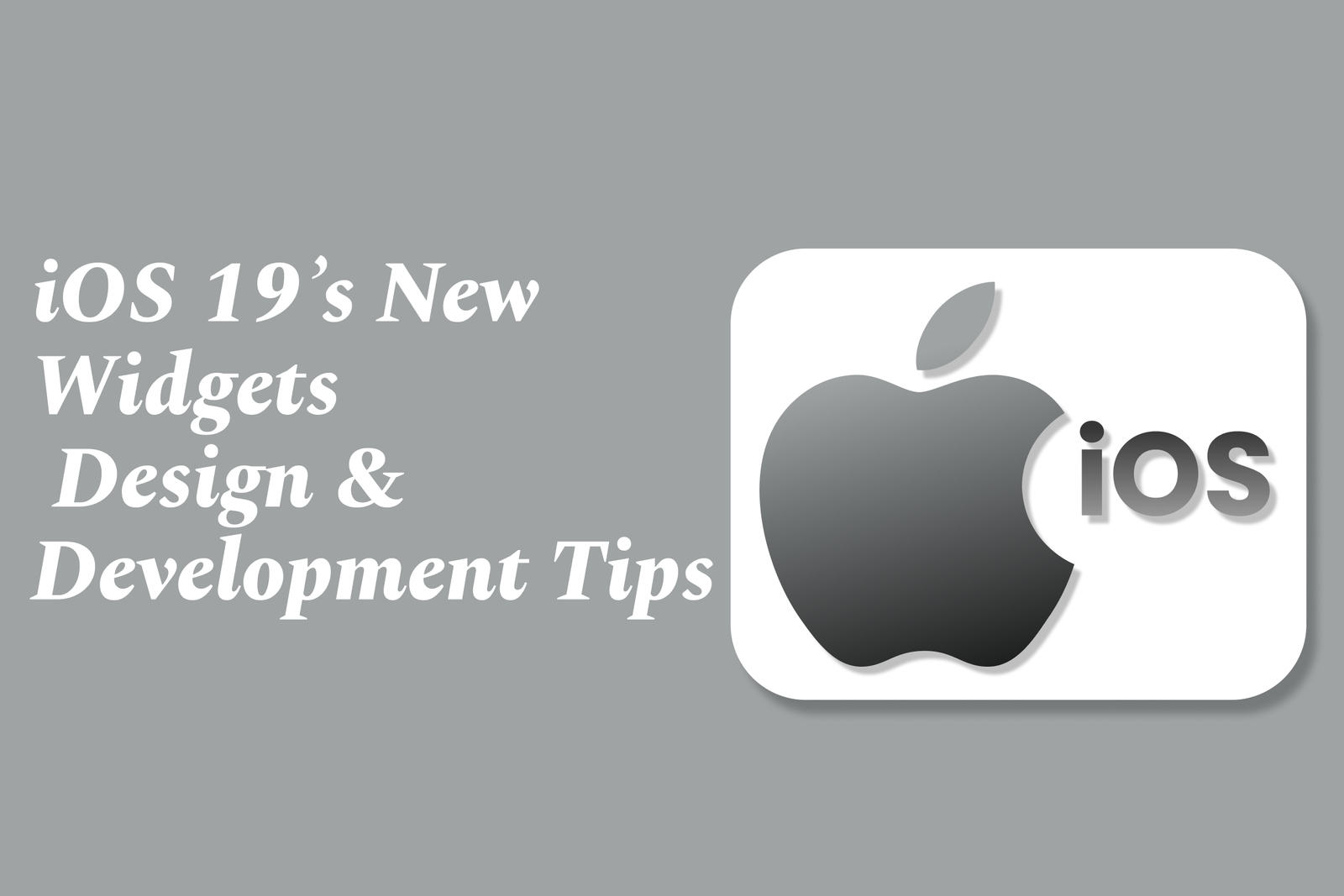iOS 19?s New Widgets: Design & Development Tips
iOS 19 introduces Liquid Glass widgets featuring translucent, fluid designs that enhance content visibility. Developers can leverage on-device AI with the Foundation Models framework and use the App Intents framework for interactive, context-aware widgets, blending beauty and functionality seamlessly.
iOS 19?s New Widgets: Design & Development Tips
1 ) Introduction to iOS 19 Widgets
iOS 19 introduces a broader design update across Apple platforms called “Liquid Glass,” elevating content visibility and creating unified design language.
New widgets leverage this design, featuring fluid, glass like materials that interact with light and background content.
2 ) Design Trends: Liquid Glass
Widgets display a “Liquid Glass” material combining optical glass properties and fluidity.
Visual effects include refraction of underlying content, light reflection, and elegant lensing at edges.
This material enhances aesthetics without compromising the unique qualities of each Apple platform.
3 ) Integrating Apple Intelligence
Widgets can tap into Apple Intelligence’s on device large language models.
Developers can use Foundation Models framework to implement features like text extraction, summarization, and more, enhancing widget interactivity and usefulness.
On device processing ensures privacy and offline availability.
4 ) Using the App Intents Framework
App Intents framework allows widget actions to deeply integrate with system features such as Siri, Spotlight, and automation.
Widgets empowered by App Intents can present context aware controls and interactive experiences via system wide functionalities.
This integration enables users to invoke app functions directly from widgets, improving accessibility and engagement.
5 ) Design & Development Tips
Embrace the new Liquid Glass design by incorporating translucency and fluid edges in widget layout.
Utilize the Foundation Models framework to add intelligent, privacy preserving features that can run offline.
Implement App Intents to enable actionable widgets, providing users with quick access to core app functionalities.
Maintain design consistency across platforms while leveraging unique platform traits to enhance user experience.
6 ) Conclusion
iOS 19 widgets offer exciting opportunities combining new visual material, intelligent on device models, and powerful system integrations.
Careful design and development following these guidelines help create compelling, efficient widgets that integrate seamlessly within the Apple ecosystem.
https://justacademy.in/news-detail/android-home-automation-integrations
https://justacademy.in/news-detail/ui/ux-trends-for-ios-apps-in-2025
https://justacademy.in/news-detail/google’s-android-developer-tools-update
https://justacademy.in/news-detail/react-native-vs-flutter-2025:-the-battle-heats-up-again
https://justacademy.in/news-detail/building-ios-apps-for-apple-vision-pro:-first-impressions
Related Posts
In 2025, top Angular libraries offer modern, feature-rich components and tools for building dynamic web apps. From powerful data grids to low-code platforms like UI Bakery, these libraries enhance development speed, UI design, and scalability, making them essential for Angular developers.
Migrating from AngularJS to Angular 17 involves gradually upgrading your app by running both frameworks together using tools like ngUpgrade, rewriting components in TypeScript, and adopting Angular’s modern architecture to enhance performance, maintainability, and long-term support.
Angular state management tools help organize and handle app data efficiently, improving scalability and maintainability. Popular options include NgRx for robust, RxJS-based patterns, and newer Signal Store solutions that offer simpler, reactive approaches integrated tightly with Angular’s latest features.
RxJS in Angular empowers developers to manage asynchronous data streams with powerful operators like `forkJoin`, `combineLatest`, and `zip`. Mastering these key operators in 2025 is essential for building efficient, reactive applications that handle complex event sequences seamlessly.
Angular performance optimization in 2025 focuses on improving app speed and responsiveness by using techniques like OnPush change detection, lazy loading, efficient data caching, and AOT compilation. These practices reduce load times, enhance user experience, and ensure scalable, fast Angular applications.
In 2025, Angular remains preferred for large-scale, enterprise apps with its robust, all-in-one framework, while Vue attracts developers seeking simplicity and fast development for smaller projects. Both frameworks excel, with choice driven by project needs and team expertise.
Angular Signals are a new reactive primitive in Angular 16 that enable fine-grained, efficient change detection by automatically tracking dependencies and updating only affected parts of the UI. They simplify state management and boost app performance, revolutionizing Angular's reactivity model.
Angular interview questions to prepare in 2025 focus on core concepts like components, directives, data binding, routing, and dependency injection, along with TypeScript mastery and latest Angular features to ensure strong practical knowledge for building scalable, efficient web applications.
AngularJS reached its official end of support in January 2022, meaning no further updates or security patches. To ensure app security and performance, developers should consider migrating to modern Angular versions or seek third-party long-term support options if immediate migration isn’t possible.
The Angular Roadmap 2025 highlights upcoming features focused on improving developer experience and performance, including zoneless Angular, Signals integration, enhanced Forms, async data handling, improved HMR, and expanded Angular Material/CDK enhancements, driving modern, efficient web app development.










